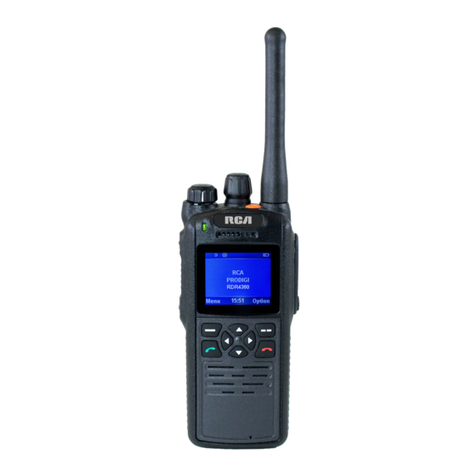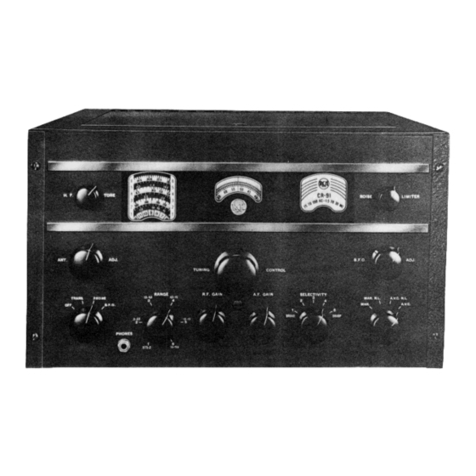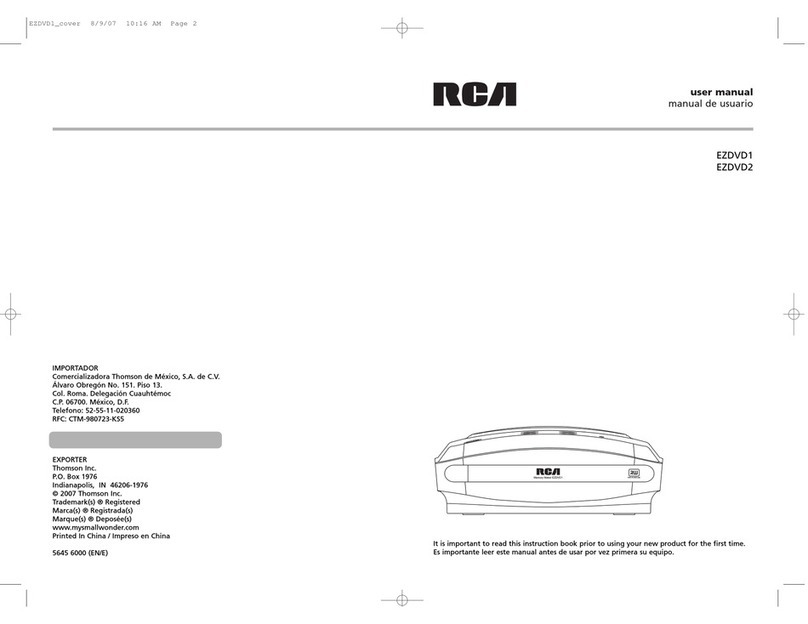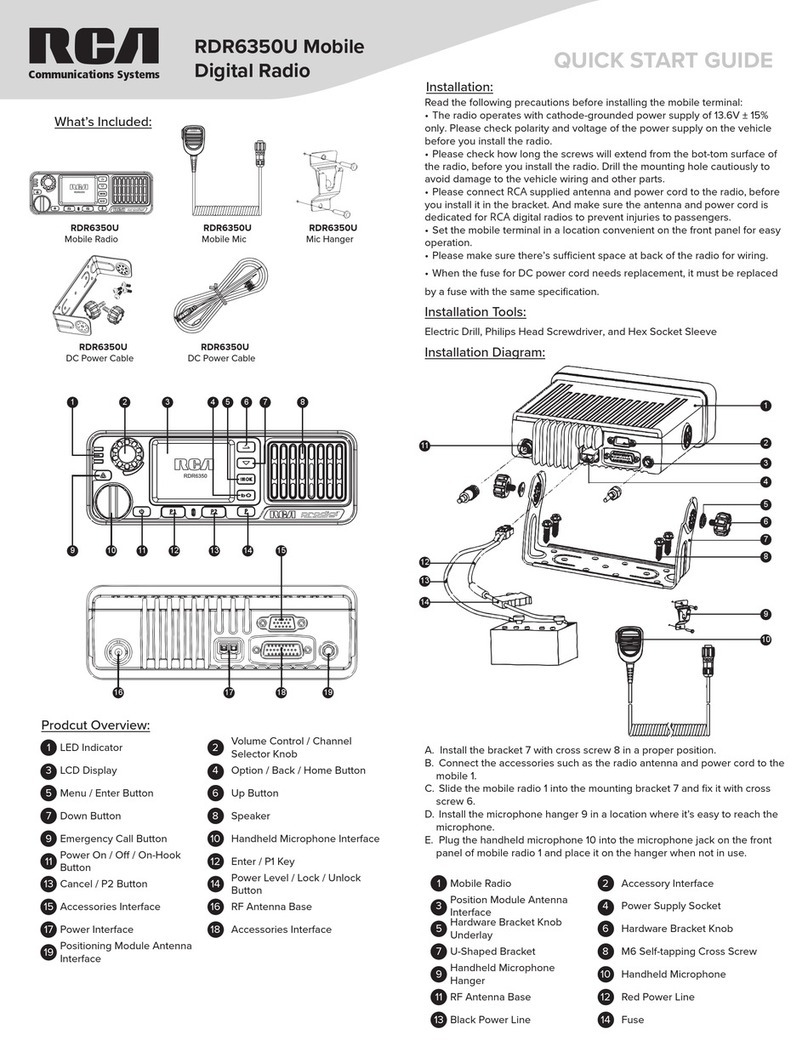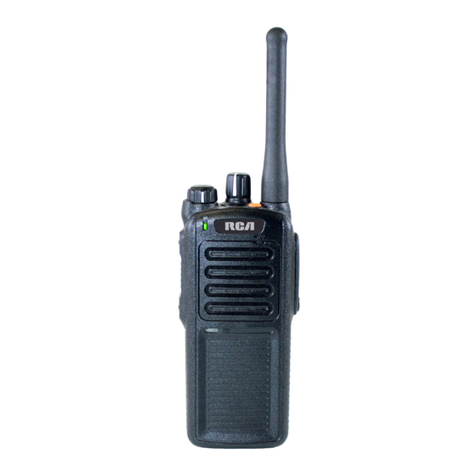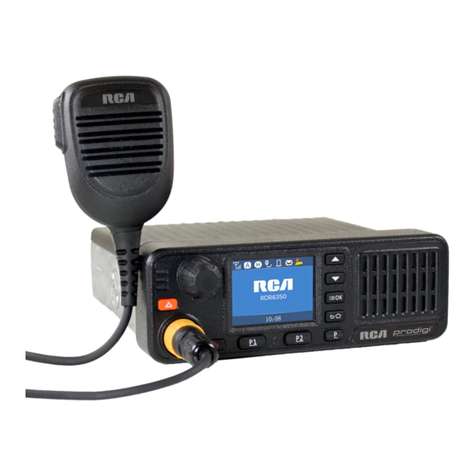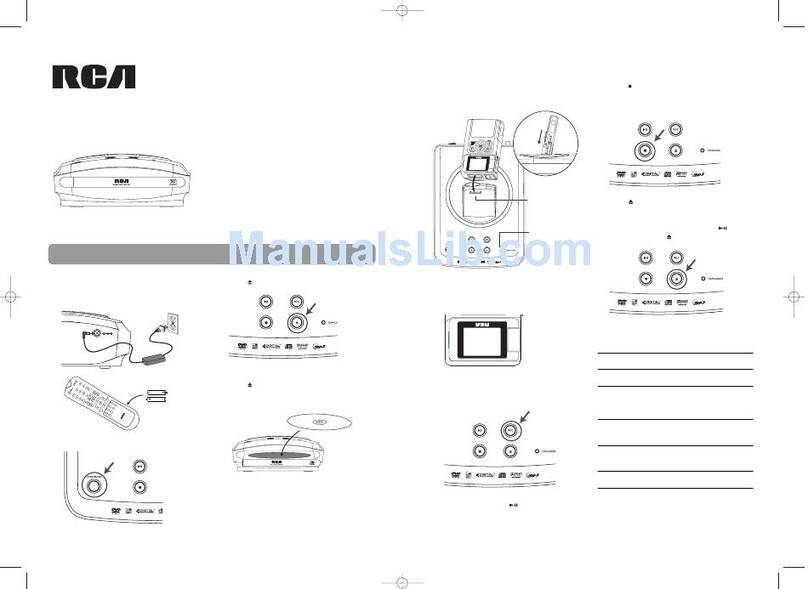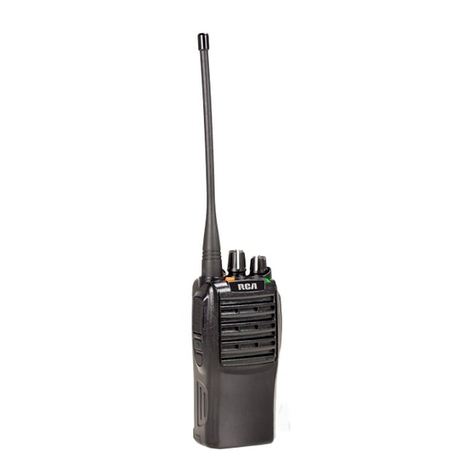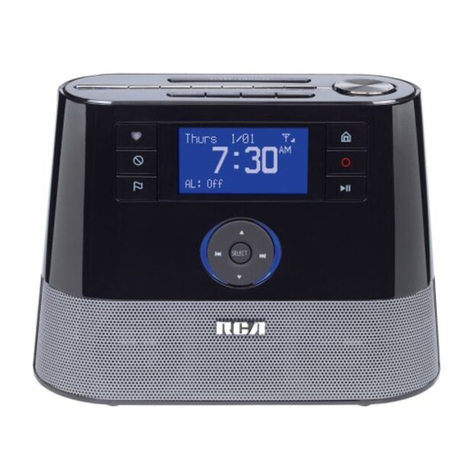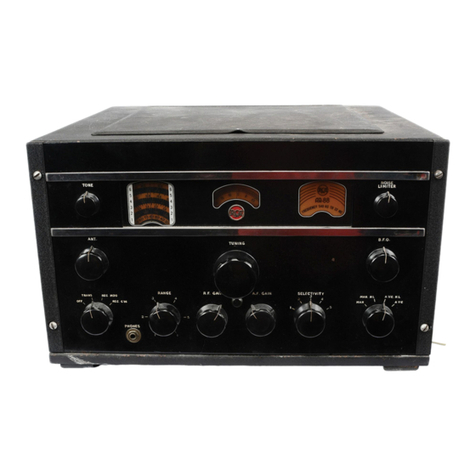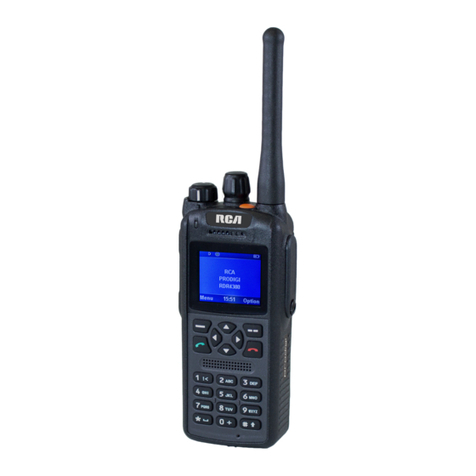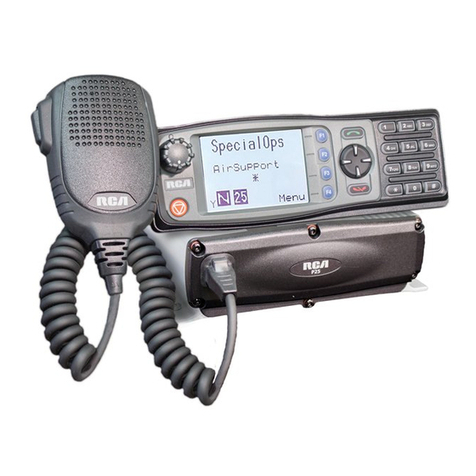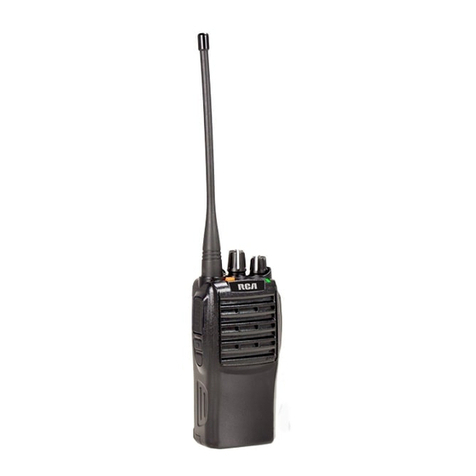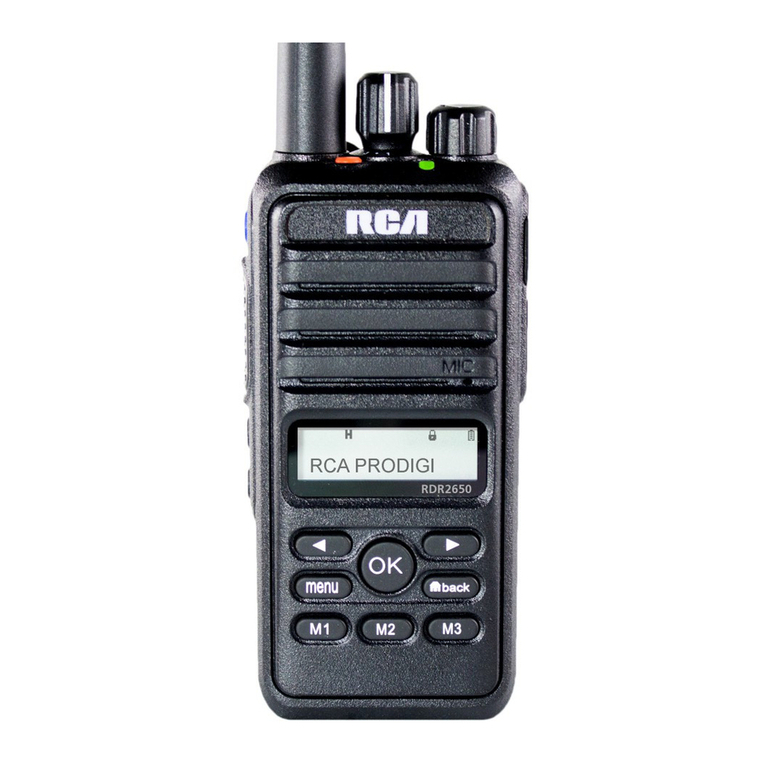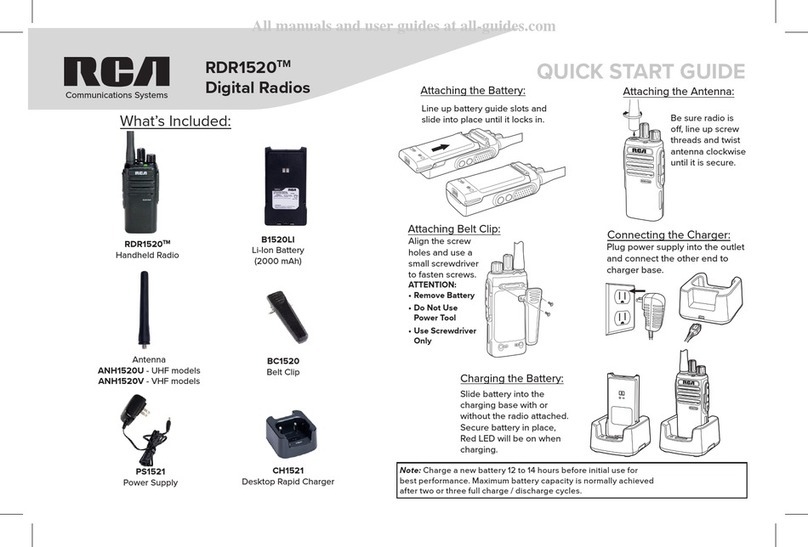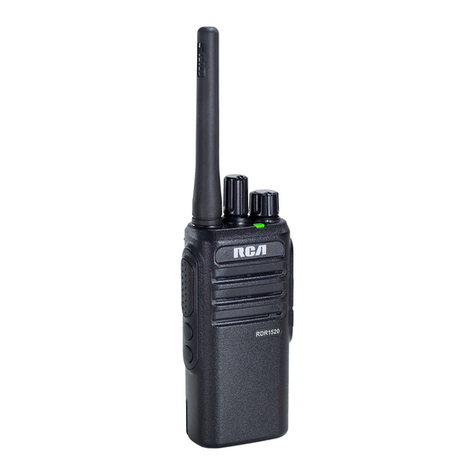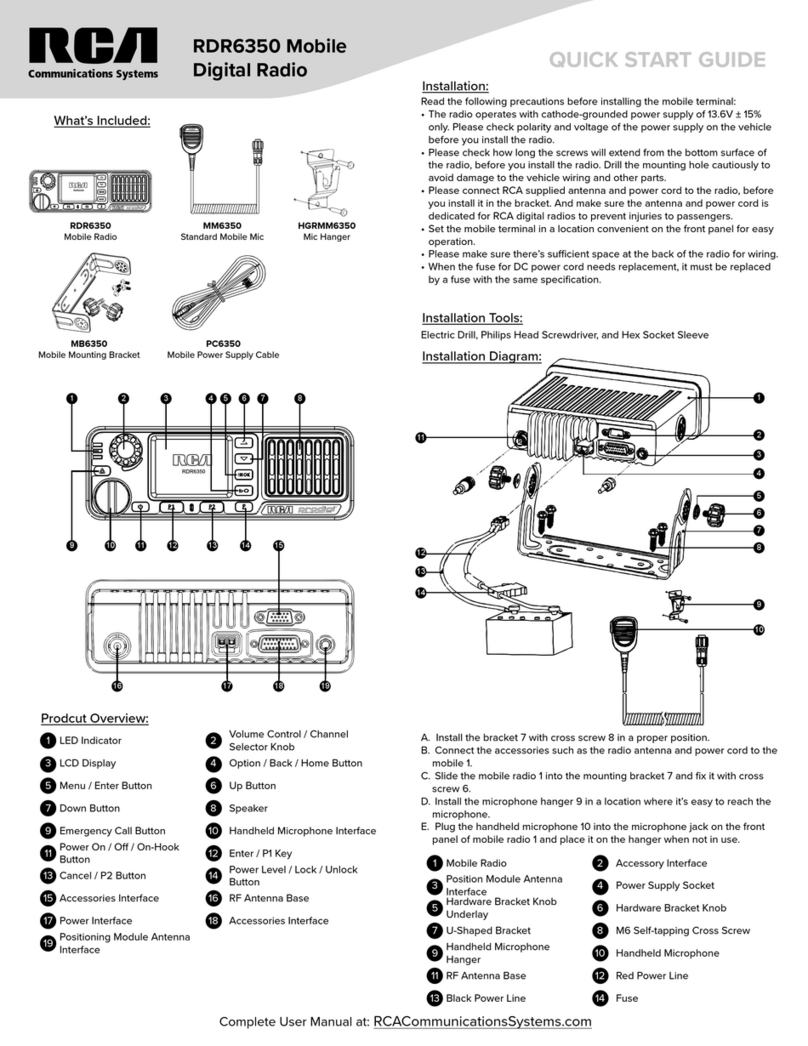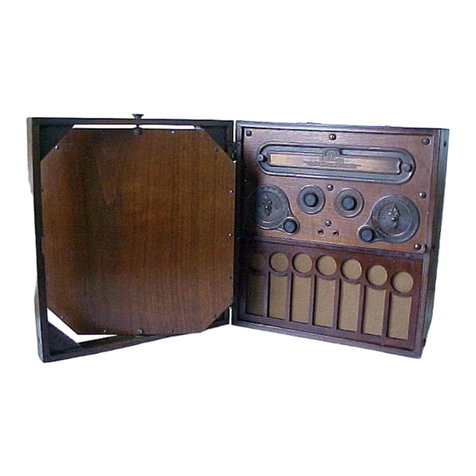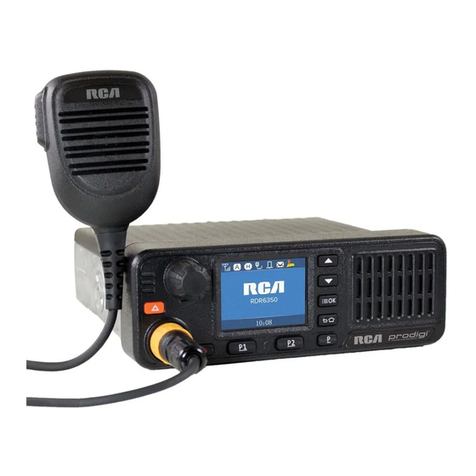
INTRODUCTION
RCA Radiolas 21 and 22 are battery operated screen grid radio receiving sets. Radiola 21 is a table model and
Radiola 22 is a console model employing the same receiver chassis and the mechanism of RCA Loudspeaker 100B.
RCA Screen Grid Radiotrons UX-222 are employed as radio frequency amplifiers, Radiotrons UX-112A as the
detector and first audio and UX-112A or UX-171A as the power stage. The choice of the power tube is left to the
customer, as different tubes may be desirable for different output requirements. The different battery requirements
may also have a bearing on the choice, as the UX-H1A requires more plate and bias batteries to
obtain advantage of its greater output.
The sensitivity and selectivity of these Radiolas is sufficient for excellent reception.
The fidelity is very good. Figure 1 illustrates a rear interior cabinet view of Radiola 22, Figure 2 top view of receiver
chassis, Figure 3 sub-chassis view of receiver, and
Figure 4 a view of the receiver with shields removed.
Figure 3—Sub-chassis view of receiver
Circuit features, see Figure 6, of these Radiolas are:
(a) Screen grid battery receiver giving sensitivity and selectivity comparable to-
that obtained with A.C. type screen grid receivers.
(b) Circuit consists of two tuned R.F. stages, tuned grid leak type detector, first:
audio stage and second audio stage employing a choice of power tubes.
(c) Local-distant switch provides best reception on both loud and weak signals. At the local position a .00023
mfd. condenser is connected from the antenna connection to ground. This condenser or when the switch
is at "distant," the antenna to ground capacity, causes the circuit to resonate in the broadcast band at
about 700 K.C., and thereby brings up the sensitivity of the low frequency end. The result is that the
receiver has about equal sensitivity throughout the tuning range.
(d) The use of screen grid tubes together with proper shielding, eliminates the necessity of neutralizing or other
methods of stabilizing.
(e) The volume control varies the voltage on the screen grid of the two R.F. tubes. This provides a smooth
means of control which, together with the local-distant switch, provides a positive cut-off even on loud
local stations.
6

